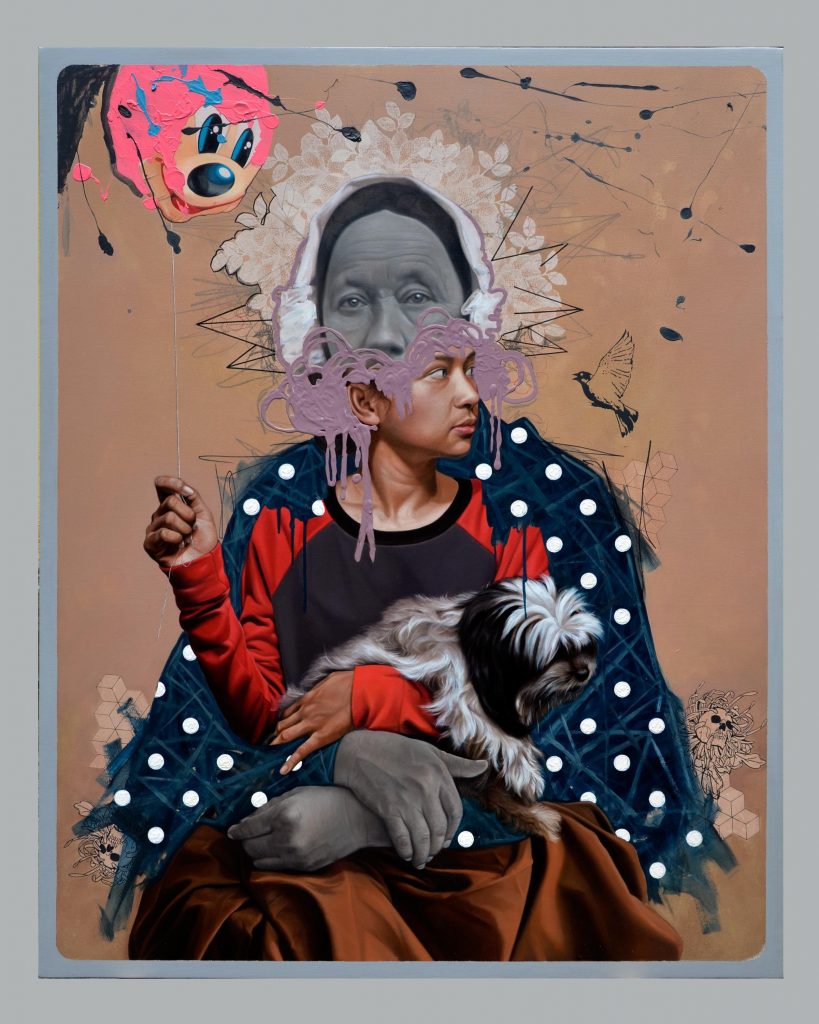CONJOINT
RG Habulan
November 19 - November 29, 2017

Conjoint
In the novel Noli Me Tangere by Dr. Jose Rizal, the figure of Dona Victorina stands out as a comic relief, a foil for the various cruelties endured by almost everyone in the story. Wearing what she believes is the latest fashion in Europe, and wearing thick make-up to hide the color of her skin, she pretends to be Spanish, and makes her husband act as a doctor to further enhance her status in society. Though laughable, the caricature of Dona Victorina, survives to this day. And it is not just in the billion dollar skin whitening industry which is peaking not just in the Philippines, but in Asia; but also in other forms and aspects, as well, which RG Habulan explores in his 8th solo exhibition, Conjoint, at Art Verite from Sunday, November 19 to Wednesday, November 29, 2017.
In Conjoint, the younger Habulan considers a new vein in his critique of the post-colonial Filipino experience. From exploring the disneyfication of violence in popular culture, explored in previous solo exhibition Tragicomical, to the incongruencies between first world aspirations enculturated by pop culture, mass media, and the internet in Vicissitudes of Victoria; Habulan now touches on the matter of power, more specifically, the burden of the post-colony, who simultaneously mimics those in power, as Dona Victorina has, in an effort to displace a measure of the burden of being oppressed, and at the same time, questions the limits of the hybrid possibilities afforded them by their inherited culture: through its prescriptions related to status, gender, and age.
In Conjoint, we see people subsumed by different personas, bearing, perhaps, the conjoint histories and influences embodied by each. Done in masterful realism, some personas are either of Victorian or American colonial images accessed from the world wide web by the artist; a projection of an idealized self, or a person familiar to the artist; or a personal past, portrayed as a child. The most obvious personas are one dimensional in their characterization, and can be read as an unconscious, or an ego; a burden, or a mask, for the real I, which is hidden underneath the projection. Sometimes, the real person, copied from a flesh and blood individual familiar to the artist, is almost faceless, covered not by one gray persona, but in layers of two or more. Key to seeing them is discerning distinctions in color and gestures in their portrayal: some projected personas are ashen gray, and are posed to be prim, lending themselves to a one-dimensional, idealized portrayal. Others, such as those hidden beneath, are colorful, less posed, more relaxed, spontaneous, and more real. Also of import are the disparities between age, which, in this culture, also create discrepancies in status and power.
Once again, as in his previous works, Habulan’s techniques of layering incongruous imagery; and combining various techniques, such as drawing, and stenciling, within the painting; highlight both the amalgamation of influences and tensions in the conjoint cultures and histories we have been exposed to, as a nation. By deconstructing, recombining, and juxtaposing the personal, with these myriad contexts, Habulan brings us to the ongoing birthing of incipient identities, which we, the product of successive colonizations and hybridities, all have to grapple with.
—Ricky Francisco